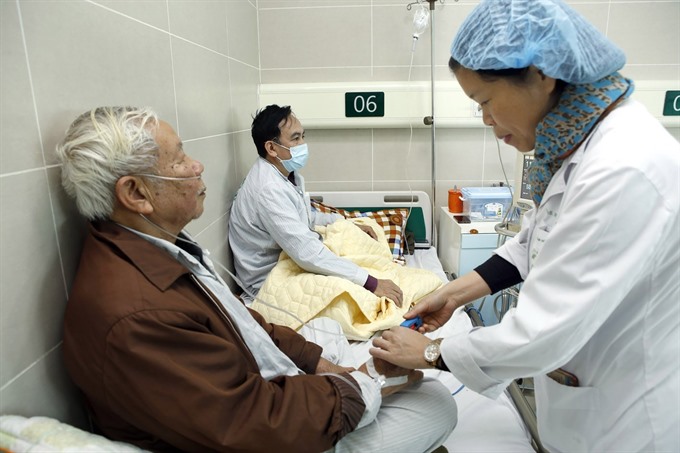 Society
Society

Although inpatient room costs have increased sharply, medical quality remains stagnant, according to the latest report by Việt Nam Social Insurance (VSI).
 |
| Treatment costs remain unreasonable compared with the quality of medical care. — VNA/VNS Photo Bích Ngọc |
The data collected in the three provinces of Bắc Ninh, An Giang and Hà Giang shows that among 52 surveyed inpatient rooms, only 13 had air conditioners, 11 had dehumidifiers and four had ventilators. Meanwhile, the cost for those appliances is included in the inpatient room charge for all rooms, even when they don’t have the appliances.
Based on type of room, the average cost per inpatient day may range from hundreds of thousands to millions of đồng.
PVB, 32, in
“Having a laparoscopy, I only needed to stay at the hospital for one day. If I stayed there for a week or ten days, the cost for the inpatient room would be multiplied. I had to pay all the costs on my own as I do not join social insurance. Although the medical service was good, the cost was a real burden for me,” he said.
C in Phú Nhuận District said that she paid VNĐ20 million ($880) for her father’s one-month treatment in HCM City Hospital of Haematology and Blood Transfusion including the inpatient room at the cost of VNĐ14 million ($616).
“It is acceptable to pay the huge amount of money on medicines and medical services rather than the inpatient room. I know we cannot ask for a high-quality room at a cheap price but the hospital can place more beds in one room to reduce the cost for patients,” she said.
A survey by conducted by Tuổi trẻ Newspaper in
Lê Văn Phúc, deputy head of VSI’s Department for Health Insurance Policy, said that the Circular No.37 on the adjustment of medical services price issued in 2015 included allowances for surgeons, appliances and other costs in the treatment cost. Moreover, it is regulated to have 1.34 medical workers taking care of a patient. However, several hospitals cannot adapt to those requirements while medical expenses are still increasing.
Therefore, patients and the social insurance fund are suffering from the pricing policy. Phúc asked hospitals to equip the rooms with enough appliances for patients to enjoy medical services commensurate with the amount of money they spent.
“I think patients have to receive quality medical services, demonstrated through medical facilities, appliances in inpatient rooms and utilities,” he said. — VNS




